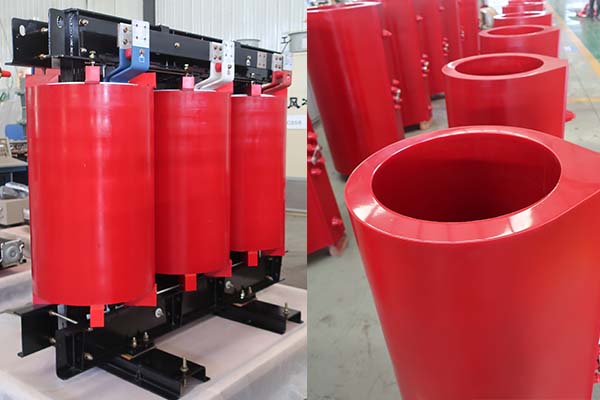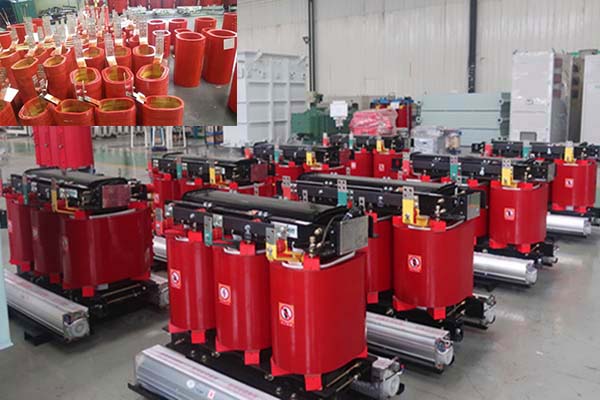Distribution transformers use round, rectangular or, less commonly, oblong core and coil assemblies. Coils facilitate the transformer’s magnetic flux flow. Coils and transformers work together to optimize performance based on design and application requirements.
The transformer’s core shape determines the coil type. In other words, round iron cores must use round coils and so on. But which coil configuration is better for dry type transformers? Understanding these differences encompasses their shapes, voltage capabilities, cooling abilities and cost-effectiveness.
Understanding Coil Design and Core Geometry
The type of coil a transformer uses correlates directly with the core design. Round iron cores mandate round coils, while rectangular cores require rectangular coils. This alignment ensures optimal magnetic flux and mechanical stability.
Transformer designers must consider not only the core but also how the coil geometry impacts operational stress and energy losses. While standard operating conditions might reveal negligible differences, the behavior under short-circuit scenarios or overload faults differs significantly.
Comparison of Physical Characteristics
| Feature | Round Coils | Rectangular Coils |
|---|---|---|
| Shape | Cylindrical | Layered/flat with rounded edges |
| Core Matching | Suits round cores | Suits rectangular cores |
| Air Gap Presence | Minimal air gaps | Little to no air gaps |
| Conductor Type | Wound conductors | Flat layered conductors |
| Thermal Dissipation | High due to radial symmetry | Moderate |
| Mechanical Robustness | Excellent | Moderate |
Round coils, by design, create a natural radial symmetry, leading to better stress distribution during transient loads. On the other hand, rectangular coils provide layout flexibility but tend to experience deformation under intense fault conditions.

Performance Under Fault Conditions
A crucial differentiator lies in how the coils respond to through-fault conditions—external faults that pass through the transformer. Round coils demonstrate superior through-fault capability. Their symmetrical structure helps distribute electromagnetic forces evenly. In short-circuit conditions, they retain their shape more effectively than rectangular coils.
Rectangular coils often suffer from uneven stress distribution. While bracing devices can mitigate deformation, the coil structure is still vulnerable under severe faults. Therefore, transformers expected to experience high mechanical stresses benefit more from round coil configurations.
Thermal Management and Cooling Efficiency
Round coils offer distinct advantages in this area due to their uniform geometry. Heat dissipation occurs more evenly across the winding. This allows better use of insulating fluids or airflow (in forced air-cooled systems), which extends the transformer's service life.
Rectangular coils, while not inherently poor in cooling, lack the thermal symmetry of round coils. Hot spots may develop more easily due to the layered design. Therefore, these coils are more suited to low- or medium-voltage applications where the heat buildup is less extreme.
Manufacturing Complexity and Cost Implications
The production of round coils is generally less complex. Their continuous winding technique reduces manufacturing time and cost. Automation of round coil winding is more straightforward, which further lowers labor intensity and production expenses.
Rectangular coils require precise layering of flat conductors and extensive insulation between layers. This adds to manufacturing time and increases the margin for human error. However, the flat configuration can optimize space utilization, which benefits compact transformer designs.
| Cost and Production Factors | Round Coils | Rectangular Coils |
| Winding Simplicity | High | Moderate to complex |
| Material Waste | Low | Medium |
| Labor Requirements | Low | Higher |
| Automation Compatibility | Excellent | Moderate |
| Space Optimization | Limited | High |

Dry type transformer Application
Transformers must align with the space, voltage, and load requirements of their installation environments. Round coils work well in high-voltage or high-current transformers due to their superior fault tolerance and thermal performance. These features make them ideal for:
Renewable energy systems (e.g., wind farms)
Power generation and distribution grids
Heavy industrial applications
Rectangular coils, by contrast, are better suited for:
Indoor transformers with strict spatial constraints
Commercial and residential buildings
Low-voltage industrial systems
Both coil types meet essential performance standards, but each excels in specific scenarios. Engineers must evaluate the load profile, cooling method, space availability, and fault tolerance required.
Design Flexibility and Customization
Rectangular coils offer significant flexibility in transformer design. Their flat profile allows manufacturers to create custom coil shapes that fit irregular enclosures. This adaptability enables the optimization of internal transformer layout, especially in panel-mounted or wall-mounted installations.
Round coils lack this customization degree due to their inherent geometry. However, when standardization, cost-efficiency, and rugged performance are priorities, round coil configurations offer better long-term value.
Varelen’s Approach to Transformer Coil Technology
At Varelen Transformers, we combine over six decades of industry experience with cutting-edge technology to design and manufacture dry type transformers for diverse applications. We use high-conductivity copper and aluminum windings with thermal class ratings that support extended operation under high loads.
Each unit undergoes rigorous testing for:
Short-circuit tolerance
Thermal endurance
Acoustic performance
Efficiency and losses
Whether your application calls for high-voltage round coils or space-saving rectangular windings, Varelen ensures reliability and compliance with global standards.
Conclusion
At Varelen Transformers, we can analyze your power requirements to recommend the most beneficial coil configuration for your facility. Our experts consider load profiles, available space, fault protection and similar needs to help you get the perfect transformer solution. We use premium-grade materials for both round and rectangular designs. Our high-conductivity copper windings and high-permeability core steel exceed industry efficiency standards. All our transformers undergo testing for temperature rise, sound levels and short-circuit durability before leaving our facility.